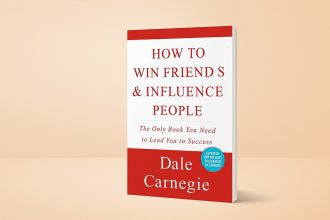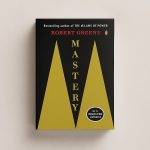Blink: The Power of Thinking Without Thinking by Malcolm Gladwell explores the fascinating science of rapid decision-making and intuition. Drawing on psychology, neuroscience, and real-world examples, Blink by Malcolm Gladwell reveals how our unconscious mind processes complex information in an instant and why those snap judgments can be surprisingly accurate or dangerously flawed. This review delves into the book’s core ideas, from thin‑slicing and the adaptive unconscious to the role of expertise and bias, offering readers a balanced understanding of when to trust their gut and when to pause. For leaders, professionals, and curious minds, Blink by Malcolm Gladwell sharpens both awareness and decision-making skills.
1. Introduction to Blink by Malcolm Gladwell
In a world that rewards data‐driven analysis and meticulously calculated strategy, Blink by Malcolm Gladwell takes a contrarian-but fascinating-stance: sometimes, our best decisions come from the gut. Published in 2005, Blink has become a defining work on rapid cognition-the mental system that allows us to make split‐second judgments that can be as reliable as, or even superior to, reasoned analysis.
Gladwell’s examination is not a naive celebration of instinct. Instead, he offers a nuanced exploration of intuitive thinking-its triumphs, its failures, and the subtle forces that shape it. Through storytelling, scientific research, and psychological experiments, he shows how thin‐slicing-the process of finding patterns in minimal information-works for and against us in personal life, professional judgment, and even social justice.
In this review, we’ll break down Gladwell’s major ideas, examine the book’s strengths and weaknesses, consider the author’s background, and explore practical lessons readers can apply across industries and contexts.
2. About the Author: Malcolm Gladwell
Background
Malcolm Gladwell is a Canadian journalist, author, and public speaker known for translating complex social science research into compelling narratives. Born in 1963 in Fareham, Hampshire, England, to a Jamaican psychotherapist mother and a British mathematics professor father, Gladwell moved to Canada at the age of six.
He earned his bachelor’s degree in history from the University of Toronto before starting his journalism career. His early reporting on business and science brought him to The Washington Post and later to The New Yorker, where he honed the storytelling style for which he’s now famous.
Body of Work
Gladwell’s bibliography includes The Tipping Point, Outliers, David and Goliath, Talking to Strangers, and Blink. Each book is known for combining quantitative research, case studies, and memorable anecdotes to illustrate a unifying theme.
Philosophy and Approach
Gladwell’s approach is interdisciplinary-blending psychology, sociology, neuroscience, and marketing to uncover hidden mechanisms behind human behavior. A recurring hallmark: bridging academic research with accessible, real‐world stories so non‐experts can engage with life‐changing concepts.
3. Overview of Blink by Malcolm Gladwell
Blink dissects the phenomenon of thinking without thinking-how decisions made in an instant can be as valuable as decisions made with prolonged deliberation.
Core premise: Our unconscious mind can process and synthesize information at lightning speed, resulting in judgments and decisions made in the “blink” of an eye. Sometimes, this rapid cognition beats careful reasoning; other times, it leads us astray due to bias, prejudice, and overconfidence.
Blink by Malcolm Gladwell is divided into two main thrusts:
The Benefits of Rapid Cognition: identifying when intuition leads to superior judgment.
The Pitfalls of Rapid Cognition: showing how unconscious biases and flawed mental shortcuts can cause serious errors.
Gladwell builds his case with stories: from a forged statue mistakenly bought by a museum, to firemen intuitively sensing a building collapse, to police misjudgments with tragic consequences.
4. Main Ideas & Concepts
Thin‐Slicing
Thin‐slicing is the ability to find patterns based on “thin slices” of experience. Gladwell explains this cognitive gift as a mental shortcut that allows experienced practitioners to cut through noise and zero in on the essence of a problem. For instance, art experts can detect forgery after a mere glance-not through magic, but because years of training have tuned their subconscious pattern recognition.
The Adaptive Unconscious
Gladwell draws on psychologist Timothy Wilson’s research to highlight the adaptive unconscious-a mental system faster and more efficient than our conscious mind. It quietly processes enormous volumes of information and guides our snap decisions.
When Intuition Goes Right
Well‐honed expertise combined with thin‐slicing often leads to highly accurate judgments:
– Example: The fire captain who evacuated his men moments before the floor collapsed-not from hearing a warning, but from sensing “something felt wrong” (abnormal heat and silence).
When Intuition Goes Wrong
Rapid cognition can fail when biases warp perception or when we misread cues.
– Example: The tragic case of Amadou Diallo, whose sudden movement was misinterpreted by police officers, revealing how stress and preconceptions can amplify error.
The Role of Expertise
Intuition is not a magical sixth sense-it’s expertise compressed into instinct. The more exposure and practice one has, the sharper and more reliable their thin‐slicing abilities.
Priming and Unconscious Influence
Our snap judgments are vulnerable to subtle environmental cues, a phenomenon known as priming. Truism: you are not as immune to suggestive surroundings as you believe.
Deliberate Practice in Intuition
Developing good intuition is about training the subconscious with feedback and varied experiences. Overconfidence without calibration leads to poor decisions.
5. Key Lessons from Blink
Trust Intuition-But Verify: Intuition can be a competitive advantage-if it’s backed by genuine expertise. If not, slow down and engage the rational mind.
Cut to the Essential: Thin‐slicing removes noise. Learn to identify the key variables driving a decision instead of drowning in irrelevant data.
Be Wary of Bias: Our unconscious mind is quick-but not infallible. Social biases, stereotypes, and emotional states can distort judgment.
Train Your Gut: Like muscle memory in sports, your intuition gets sharper the more relevant, quality repetitions you give it.
Create Decision‐Friendly Environments: The right environment empowers sound snap judgments; high‐pressure, high‐bias contexts invite errors.
6. Strengths and Criticisms
Pros
Engaging Storytelling: Gladwell presents research through vivid, real‐world stories, making abstract psychology tangible.
Practical and Cross‐Domain: Lessons in Blink apply to business, sports, medicine, policing, design, and everyday relationships.
Balanced Perspective: Acknowledges and explains both benefits and dangers of rapid cognition.
Memorable Core Concepts: “Thin‐slicing” and “adaptive unconscious” become sticky mental models.
Accessible Language: Even complex psychological theory is made approachable.
Cons
Overreliance on Anecdotes: Some critics argue the case studies cherry‐pick evidence to fit the thesis.
Limited Counterexamples: Occasional lack of depth in exploring domains where quick judgments consistently fail.
Dated References: Some research and examples, given the book’s 2005 release, could benefit from modern updates.
Overgeneralization Risk: Readers may misapply lessons, assuming all intuition is equally reliable.
7. Impact and Relevance
Nearly two decades after publication, Blink by Malcolm Gladwell remains influential in psychology, leadership training, and decision‐making workshops. It influenced how managers approach hiring, how first responders manage high‐pressure situations, and how designers think about user interfaces. Its message-intuition can be powerful but must be honed-connects in an attention‐scarce age where instinct often drives first reactions.
8. Applications Across Fields
– Medicine: Train doctors to identify patterns in symptoms without overtesting, but support with verification steps.
– Business: Use thin‐slicing in branding and product design, but test assumptions with data.
– Education: Calibrate teachers’ instincts through feedback to improve classroom management decisions.
– Policing: Address biases in snap decisions through scenario training and awareness of priming cues.
– Sports: Enhance athletes’ situational judgment through varied live‐practice simulations.
9. Verdict
Blink by Malcolm Gladwell succeeds in taking an academic concept-rapid cognition-and making it actionable for the general reader. Gladwell’s artistry lies in distilling research into stories that provoke both curiosity and self‐examination. The book’s biggest gift is a dual awareness: you can trust your gut, but only when your gut has earned that trust.
For business leaders, educators, medical professionals, and anyone navigating fast‐moving situations, it’s a foundational text that encourages both confidence and caution.
10. Conclusion: Blink by Malcolm Gladwell
In Blink: The Power of Thinking Without Thinking, Malcolm Gladwell challenges the notion that slow, careful analysis is always superior. By illustrating how thin‐slicing, adaptive unconscious processing, and expertise can yield remarkable accuracy in a split second, he empowers readers to reassess their decision‐making approaches. Yet his cautionary tales remind us of the biases and errors that lurk under the surface.
Whether you’re making life‐changing calls in a crisis or quick judgments in daily life, Blink by Malcolm Gladwell offers timeless insights into the interplay between instinct and intellect-reminding us that the key to better snap decisions is knowing when to trust them.
If you found this review helpful, please share it or leave a comment below.













